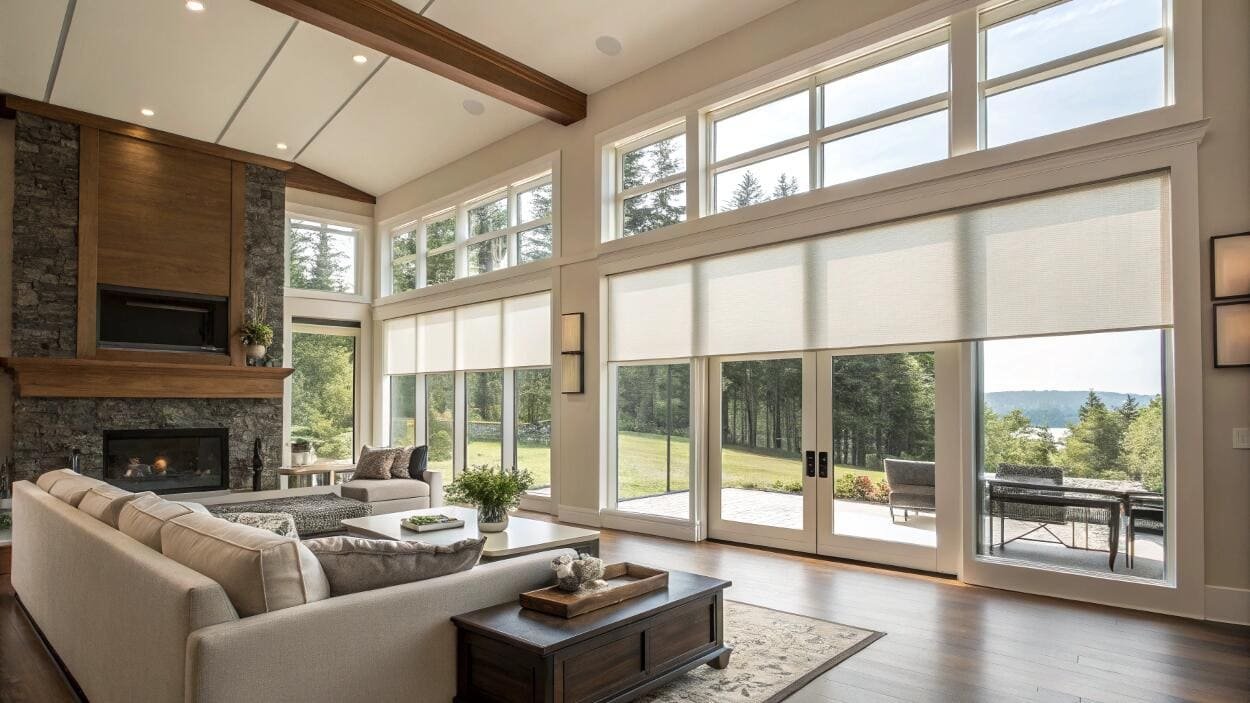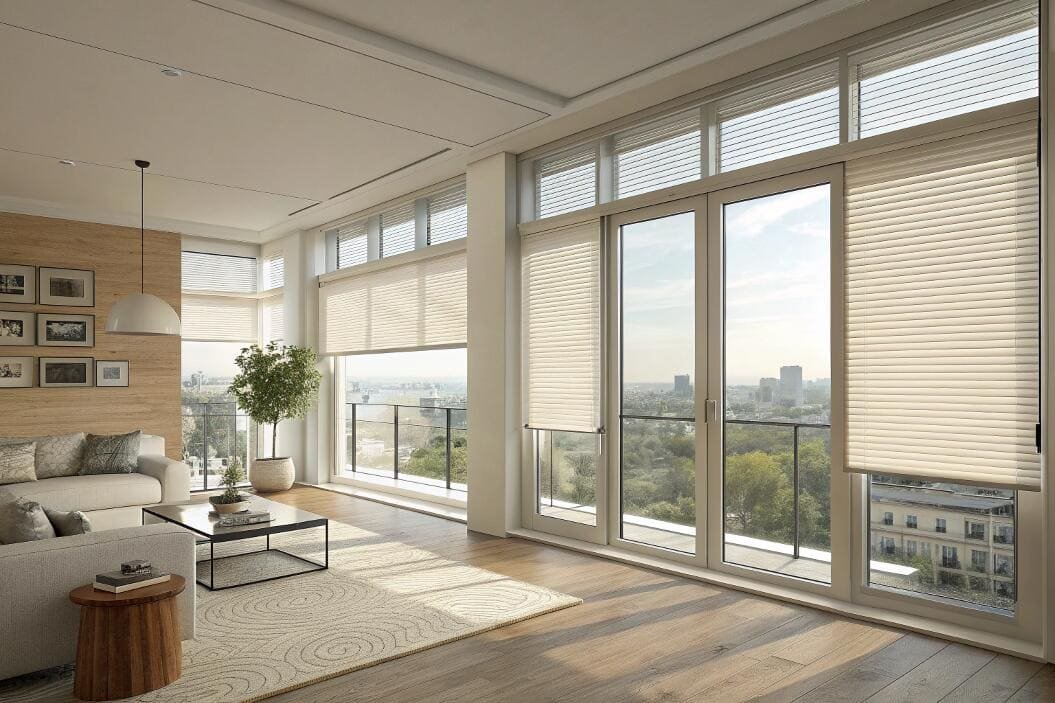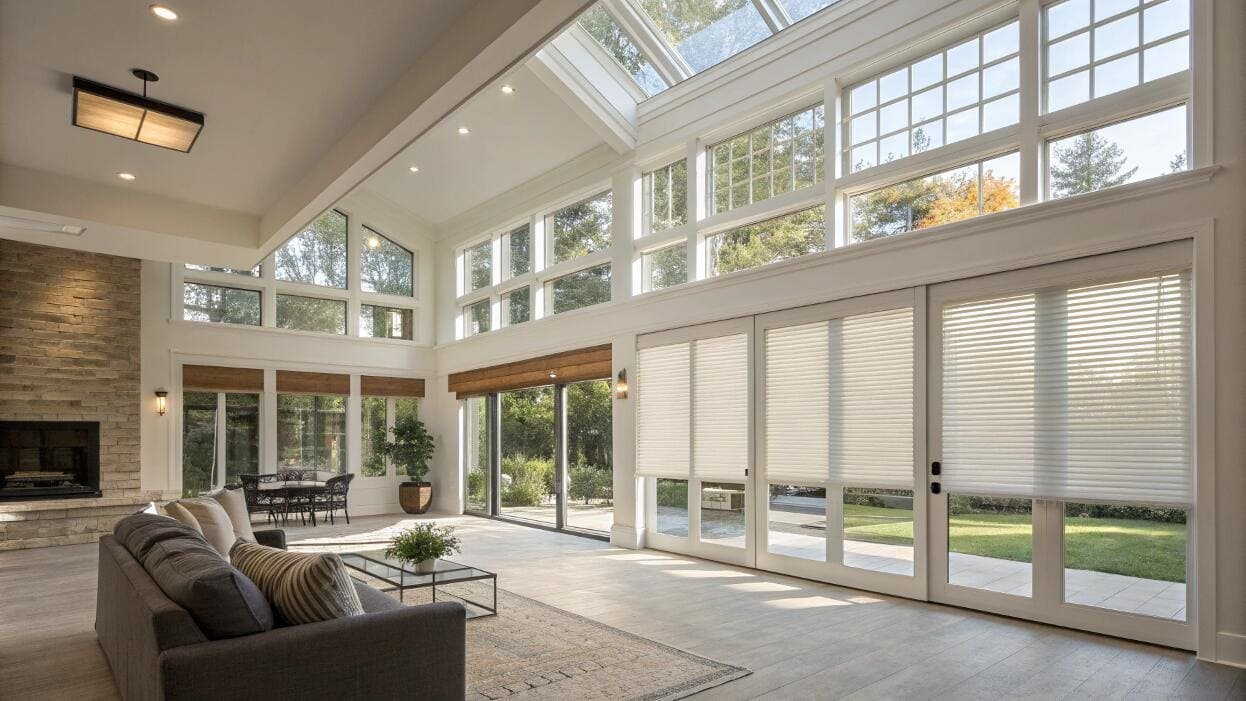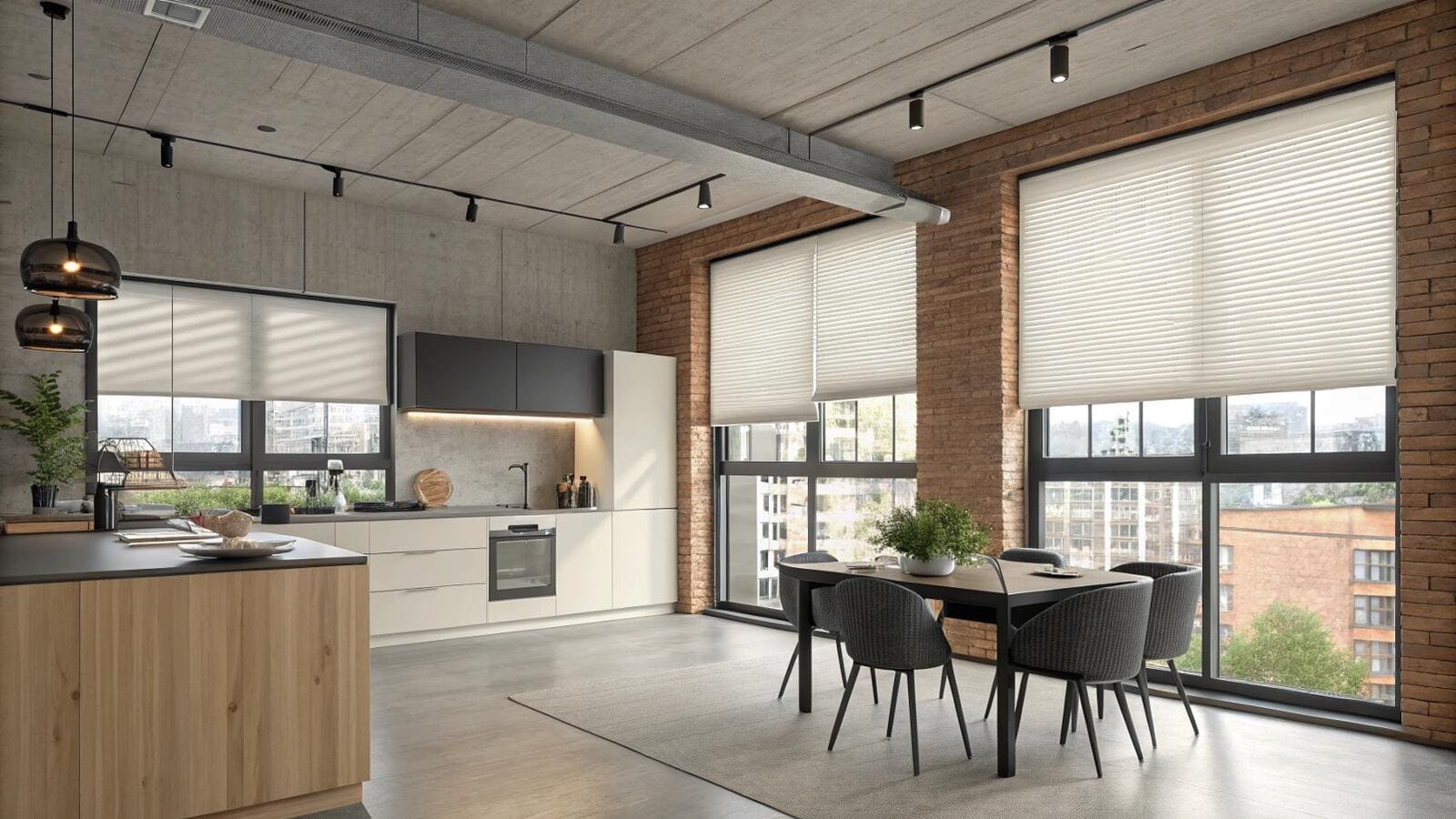Planning a new build or renovation and trying to future-proof your design? Making the wrong decision now about wiring for smart shades[^1] can lead to costly and messy retrofits down the road.
Pre-wiring is the gold standard and highly recommended for hardwired motorized blinds in new construction, but it is not necessary. Excellent wire-free alternatives, like rechargeable battery-powered blinds[^2], completely eliminate the need for any pre-wiring[^3].

This question is one of the first things I discuss with project buyers like Emma. When she's working with architects on a new commercial tower or a high-end home, planning for automation is key. Deciding whether to pre-wire is a critical early step that impacts budget, aesthetics, and long-term convenience. Getting it right from the start saves everyone from headaches later. The great news is, no matter your situation, there's a perfect power solution for you.
Do you need power for motorized blinds?
Considering smart shades but unsure about the technical side? It's easy to forget that the "magic" of automation needs a source of energy to work.
Yes, absolutely. All motorized blinds require a source of electricity to operate the internal motor that raises, lowers, or tilts the shade. The way they receive this power is what differs between various systems, giving you incredible flexibility.

At its heart, a motorized blind is a simple machine: a motor turns the tube that the fabric is on. And that motor needs energy to run. Think of it just like any other automated device in your home or office. Your TV needs to be plugged in, and your phone needs its battery charged. Motorized blinds are the same. The key takeaway is not if they need power, but how they get it. This is where the industry has made huge strides, moving beyond traditional wiring to offer very convenient solutions. The two main families of power are self-contained power, which means a battery inside the blind[^4] itself, and building power, which means connecting the blind to your property's electrical grid. Understanding this basic need for power is the first step in choosing the right system for your project.
How do motorized blinds get their power?
Feeling overwhelmed by the technical options for powering your blinds? Choosing the wrong one can lead to future maintenance issues or aesthetic problems like dangling cords.
Motorized blinds get power in three main ways: from a rechargeable battery inside the blind, by being hardwired directly into your building's electricity, or from a simple plug-in wall adapter[^5]. Each offers a unique blend of convenience and permanence.

Choosing the right power source is crucial for the success of a project. When I work with a client, we select the method that best fits their specific building and needs. A historic renovation will have very different requirements than a brand-new office building. For most situations, one of these three solutions is a perfect fit. Sometimes, a project might even use a mix of types. For example, battery power for existing rooms and hardwired for a new extension. This table breaks down the options so you can see the pros and cons of each. It's the same guide I use to help my own clients make an informed decision.
| Power Source | How It Works | Best For | Key Advantage |
|---|---|---|---|
| Rechargeable Battery | A lithium-ion battery sits inside the motor. Recharged annually via USB-C. | Retrofits, historic buildings, any project. | Ultimate flexibility, no wiring needed. |
| Hardwired (Low Voltage) | A thin wire runs from the blind to a transformer, then to home power. | New construction, major renovations. | Maintenance-free, "set and forget" power. |
| Plug-In Adapter | A power cord runs from the blind to the nearest standard wall outlet. | DIY-friendly installs where an outlet is near. | Simple and direct, no electrician needed. |
Do motorized blinds need an outlet?
Dreaming of clean, automated windows but dreading ugly cords? Having to rely on an existing outlet can severely limit your design choices.
Only plug-in style motorized blinds require a nearby electrical outlet. The two most popular and professional solutions—rechargeable battery and hardwired blinds—do not use outlets at all, offering a much cleaner, wire-free look.

This is a common point of confusion. Many people hear "electric blinds" and immediately picture a power cord running down the wall to the nearest outlet. While that is one option, it's often the least desirable from a design perspective, especially in a high-end residential or commercial project. The beauty of modern systems is that you can have fully automated control with zero visible wires. Battery-powered blinds are the ultimate example of this, as they are completely self-contained. Hardwired blinds also achieve this seamless look. During construction, an electrician runs the wire inside the wall from the top of the window frame to a central power source. The connection is completely hidden. For the projects I supply, especially those managed by detail-oriented professionals like Emma, avoiding the use of outlets is almost always a top priority for achieving that flawless, integrated finish.
Do motorized blinds have to be hardwired?
Do you think getting motorized blinds means you have to tear open your walls and hire an electrician? This misconception can stop a fantastic upgrade project in its tracks.
No, motorized blinds absolutely do not have to be hardwired. Rechargeable battery technology has become so advanced that battery-powered blinds are now the most popular choice for their simplicity, reliability, and easy installation without any wiring.

Hardwiring is a fantastic solution, but it is not the only solution. The idea that you must commit to a complex electrical job is thankfully a thing of the past. I’ve worked on many projects in older buildings or simple retrofits where cutting into walls just wasn't an option. In these cases, our battery-powered motors are the perfect answer. The technology has improved dramatically over the last few years. The lithium-ion batteries we use are powerful and incredibly efficient. A single charge can last for a full year of normal daily use. This means you get all the benefits of motorization—the convenience, the smooth operation, the smart home integration—with none of the wiring. It makes motorized shades accessible for any room in any building, regardless of its age or construction.
What is needed for motorized blinds?
Ready to take the next step but not sure what parts you need to order? A successful installation depends on having all the right components from the start.
To set up motorized blinds, you only need three core components: the physical blind with its motor, a defined power source (like a battery or hardwired connection), and a method of control (such as a remote, wall switch, or app).

Let's break down the complete system into its three essential parts. Thinking about it this way ensures you don't miss anything in the planning phase.
- 1. The Blind and Motor: This is the hardware that is mounted in your window. You choose the fabric style and color, and we build it with the appropriate motor already sealed inside the roller tube. The motor is the engine of the system.
- 2. The Power Source: As we've discussed, you have to choose how to get energy to that motor. This is where you decide between the wire-free convenience of a rechargeable battery or the maintenance-free permanence of a hardwired connection.
- 3. The Control Method: How will you tell the blind what to do? The simplest method is a handheld radio frequency (RF) remote. You can also have a wireless wall switch that looks like a light switch. For full automation, you'll need a smart hub or bridge. This device connects your blinds to your Wi-Fi network, allowing you to control them with an app or integrate them with systems like Google Home, Alexa, or a professional building management system.
What are best practices for pre-wiring in new construction?
As a contractor, you want to wire a new building correctly once. How do you design an infrastructure that is robust, scalable, and ready for any future shading technology?
The industry best practice for pre-wiring is to run a 2-conductor low-voltage wire (e.g., 18/2 gauge) from the top corner of each window opening back to a central utility closet. This "star configuration" offers maximum flexibility for power and control.

When Emma and I work on a large new build, this is the exact strategy we map out with the architects and electricians. Running the wires while the walls are open is incredibly cost-effective and sets the building up for success. The key is the centralized design. Instead of putting a transformer near each window, you run all the low-voltage wires to a single, easily accessible location like a server room or utility closet. Here, you can install a large power panel that can handle all the blinds on a floor, or even in the entire building. This makes maintenance a breeze. It also massively simplifies integration. The control hardware needed for a Building Management System (BMS)[^6] can be installed right next to the power panel, creating a clean command center for the entire shading system. This method not only supports the blinds you install today but also provides the backbone to easily upgrade or expand the system in the future without ever having to cut into a finished wall again.
Conclusion
Pre-wiring is the best choice for new builds to create a seamless, maintenance-free system. For all other projects, advanced battery technology provides a powerful and convenient wire-free alternative, making smart blinds a reality for any space.
---
[^1]: Explore how smart shades can enhance your home automation experience and improve energy efficiency.
[^2]: Find out why rechargeable battery-powered blinds are a flexible and convenient option for any space.
[^3]: Learn about the advantages of pre-wiring for motorized blinds in new constructions to avoid future issues.
[^4]: Discover how the internal battery technology enhances the functionality of motorized shades.
[^5]: Learn about the simplicity and convenience of using a plug-in wall adapter for motorized blinds.
[^6]: Learn how a BMS can enhance the control and efficiency of your motorized blinds.Partner with VelaBlinds for Your Next Project
Smart window treatments shouldn't be complicated. After working with 500+ distributors and contractors worldwide, I've streamlined the process to get you quality products, competitive pricing, and reliable support - every time.
Why project professionals choose VelaBlinds:
- ✅ Fast, Accurate Quotes - Detailed specs and pricing within 24 hours
- ✅ Transparent Pricing - No hidden fees, volume discounts clearly outlined
- ✅ Quality Assurance - Direct partnerships with certified OEM manufacturers
- ✅ Project Support - Dedicated account manager from quote to delivery
Start your next project:
📧 Quick Quote: Send your requirements to info@velablinds.com
📱 Direct Contact: WhatsApp +86 137 2012 8317
🌐 Browse Solutions: https://velablinds.com/
📁 Product Resources: Access spec sheets, catalogs & project files
Paul Chen, Founder
"I built VelaBlinds to solve the real challenges I faced as a project buyer - long lead times, unclear specs, and unreliable suppliers. Let's discuss how we can power your projects with smarter blinds."
Serving distributors and contractors across North America, Europe, and Australia since 2018.



